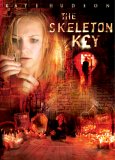| Reviews & Columns |
|
Reviews DVD TV on DVD Blu-ray 4K UHD International DVDs In Theaters Reviews by Studio Video Games Features Collector Series DVDs Easter Egg Database Interviews DVD Talk Radio Feature Articles Columns Anime Talk DVD Savant Horror DVDs The M.O.D. Squad Art House HD Talk Silent DVD
|
DVD Talk Forum |
|
|
| Resources |
|
DVD Price Search Customer Service #'s RCE Info Links |
|
Columns
|
|
|
Skeleton Key, The
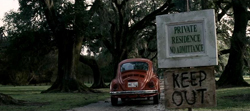 Mention the word voodoo and the first image that comes to mind, for most people, will be a little doll with a bunch of pins stuck in it. Voodoo (and particularly voodoo dolls) has been prevalent in movies for many years, but I'm not so sure that Hollywood's given people the right message about the subject. Most people, I imagine, wouldn't have any clue that voodoo is actually a religion that has many followers in the New Orleans area. They'd also probably have no idea what hoodoo is and the majority of people, in fact, probably have the impression that voodoo is actually what hoodoo really is. Magical spells and dolls that you can make to hurt someone you don't like. That's not voodoo, despite what Hollywood might have you think. That's hoodoo.
Mention the word voodoo and the first image that comes to mind, for most people, will be a little doll with a bunch of pins stuck in it. Voodoo (and particularly voodoo dolls) has been prevalent in movies for many years, but I'm not so sure that Hollywood's given people the right message about the subject. Most people, I imagine, wouldn't have any clue that voodoo is actually a religion that has many followers in the New Orleans area. They'd also probably have no idea what hoodoo is and the majority of people, in fact, probably have the impression that voodoo is actually what hoodoo really is. Magical spells and dolls that you can make to hurt someone you don't like. That's not voodoo, despite what Hollywood might have you think. That's hoodoo.Now that I've probably only confused you even more, I just figured I'd try to make that distinctive very clear before delving into Iain Softley's The Skeleton Key – a film that tries wholeheartedly to separate voodoo and hoodoo, but ultimately ends up in its own muck of convolution. When Kate Hudson's character, Caroline Ellis, takes a job in the Louisiana bayous, she probably has about as much knowledge of voodoo and hoodoo as the next city girl: not much. Urged by her friend not to take the job out in the swamps, Caroline persists anyway and ends up in some very strange situations with a paralytic man, a creepy old lady, a soft-talking lawyer, and locked room in the attic. All this while running through a large plantation house in various stages of undress.
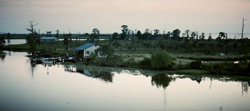 The two things about The Skeleton Key that actually give it a real chance to work right from the start are the atmosphere and the cast. Softley shot much of the film on location in the Louisiana bayous and it clearly shows. Dan Mindel's cinematography is, literally, dripping with atmosphere. Everything seems dank, wet, and moist. Even when it's not raining, the trees seem to be dripping, the ground appears soft, and the backyard swamp almost looks like it might inch right up to the back porch. This is exactly what works about the film. I love story and character as much as the next guy, but I'm a huge sucker for atmosphere, and while The Skeleton Key is not the most atmospheric film in the history of cinema it does have a ton of dripping wet scenery to chew on.
The two things about The Skeleton Key that actually give it a real chance to work right from the start are the atmosphere and the cast. Softley shot much of the film on location in the Louisiana bayous and it clearly shows. Dan Mindel's cinematography is, literally, dripping with atmosphere. Everything seems dank, wet, and moist. Even when it's not raining, the trees seem to be dripping, the ground appears soft, and the backyard swamp almost looks like it might inch right up to the back porch. This is exactly what works about the film. I love story and character as much as the next guy, but I'm a huge sucker for atmosphere, and while The Skeleton Key is not the most atmospheric film in the history of cinema it does have a ton of dripping wet scenery to chew on.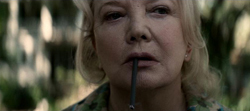 The other thing that the film has going for it is an excellent, experienced cast. I'm not sure how Director Iain Softley managed to do it, but snagging his four lead actors was a major coup for his film. Peter Sarsgaard, Gena Rowlands, John Hurt, and Kate Hudson all hold their own in this film, but it is the combination of all four that even makes The Skeleton Key worth watching. Rowlands is her usual powerful self, even if she plays Violet Devereaux a bit over the top at times, John Hurt does an outstanding job giving life to a nearly motionless man, – his eyes alone act better than ninety percent of Hollywood's leading men – and Sarsgaard brings a little creepiness to the whole "Southern Gentleman" act. Sure, Kate Hudson hasn't really done anything interesting since Almost Famous – and, truth be told, she's not all that astounding here either – but she manages to bring a down-to-earth sensibility to her character than a more magnanimous actor might not have been able to deliver.
The other thing that the film has going for it is an excellent, experienced cast. I'm not sure how Director Iain Softley managed to do it, but snagging his four lead actors was a major coup for his film. Peter Sarsgaard, Gena Rowlands, John Hurt, and Kate Hudson all hold their own in this film, but it is the combination of all four that even makes The Skeleton Key worth watching. Rowlands is her usual powerful self, even if she plays Violet Devereaux a bit over the top at times, John Hurt does an outstanding job giving life to a nearly motionless man, – his eyes alone act better than ninety percent of Hollywood's leading men – and Sarsgaard brings a little creepiness to the whole "Southern Gentleman" act. Sure, Kate Hudson hasn't really done anything interesting since Almost Famous – and, truth be told, she's not all that astounding here either – but she manages to bring a down-to-earth sensibility to her character than a more magnanimous actor might not have been able to deliver.With all that atmosphere and the great cast going for it The Skeleton Key must be really good, huh? Well, not so much. The problem with Softley's film is the fact that it's a bit too long, much too convoluted, and it basically runs itself into the ground with a silly chase scene near the end. I don't, however, blame all this on Softley. I'm sure much of these problems came directly from hack screenwriter extraordinaire Ehren Kruger. Every single time the film starts to get some legs with a creepy scene here or there, something comes along to ruin the momentum, and there are just too many inconsistencies and contrivances abound in the material. A locked room in the attic that's obscured by some boxes? Oh, no one's ever been in there. No way. Not to mention all the gratuitous shots of Kate Hudson in her underwear. Yes, Mr. Softley, we all know that Kate looks great in her underwear – she did a great job tightening back up after having her baby – but do we really need to see her running through the house in them every fifteen minutes or so? It just doesn't make sense to me that Caroline Ellis would only wear butt-hugging underwear and a teeny, tiny tank top to bed in a house with two strange people that she works for. It's almost as if the higher-ups at Universal told Softley, "Listen, we love your film, but we've got to see Kate in her underwear at least three more times before the end."
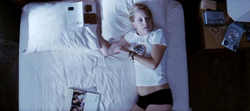 When it really comes down to it, The Skeleton Key is just another mindless thriller that tries desperately to be a film with some real depth. It's a film that wants people to have to think hard about it, but has way too many contrivances for that. I applaud Director Iain Softley for following through with his intentioned ending. I really thought that he was going to double back on it at some point, and was delighted to see it followed through to its logical conclusion. And I applaud Director of Photography Dan Mindel for shooting a very atmospheric film that makes every bit of celluloid appear to be soaking wet. In the end, however, these things aren't quite enough to make The Skeleton Key a worthwhile film. It simply gets too mired down in its looping inconsistencies and its silly action sequences to actually be meaningful. The film, instead, chooses to go the route of the mindless thriller that will give you a few entertaining bits but not much more than that.
When it really comes down to it, The Skeleton Key is just another mindless thriller that tries desperately to be a film with some real depth. It's a film that wants people to have to think hard about it, but has way too many contrivances for that. I applaud Director Iain Softley for following through with his intentioned ending. I really thought that he was going to double back on it at some point, and was delighted to see it followed through to its logical conclusion. And I applaud Director of Photography Dan Mindel for shooting a very atmospheric film that makes every bit of celluloid appear to be soaking wet. In the end, however, these things aren't quite enough to make The Skeleton Key a worthwhile film. It simply gets too mired down in its looping inconsistencies and its silly action sequences to actually be meaningful. The film, instead, chooses to go the route of the mindless thriller that will give you a few entertaining bits but not much more than that.The DVD
Video:
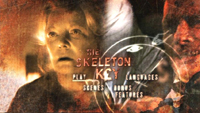 The Skeleton Key is presented in an anamorphic 2.35:1 widescreen format that looks great in just about every way. The dripping wet look of the film is intricately detailed with deep, rich blacks, well-delineated shadows, and moist, glistening surfaces. There's a dank, earthy color (mixed with some occasional blue tones) to the film that comes across well in this transfer. Flesh tones are spot on, colors are accurate and not overly saturated, and contrast is excellent throughout. The only minor issues that arise are some slight grain in darker scenes and a bit of edge enhancement from time to time. For a film as dark and wet looking as The Skeleton Key, however, this transfer is excellent in just about every way.
The Skeleton Key is presented in an anamorphic 2.35:1 widescreen format that looks great in just about every way. The dripping wet look of the film is intricately detailed with deep, rich blacks, well-delineated shadows, and moist, glistening surfaces. There's a dank, earthy color (mixed with some occasional blue tones) to the film that comes across well in this transfer. Flesh tones are spot on, colors are accurate and not overly saturated, and contrast is excellent throughout. The only minor issues that arise are some slight grain in darker scenes and a bit of edge enhancement from time to time. For a film as dark and wet looking as The Skeleton Key, however, this transfer is excellent in just about every way.
Sound:
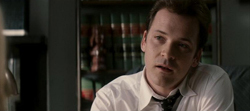 The audio on this disc is presented in a Dolby Digital 5.1 format that works just as well as the visual presentation. Dialogue is always clear, crisp, and distinct, and the various aspects of the soundtrack are well balanced. Edward Shearmur's haunting score comes across beautifully with a little help from the surround channels and great spatial separation across the front channels. The film's varied soundtrack includes the aforementioned score, some creepy conjure music, a bit of local hip-hop, and even some New Orleans jazz and blues. Each aspect sounds great throughout the film, never becoming overwhelmed by the necessary jump-scare sound effects. One of the best things about this track, however, is the amount of ambience provided by the surround channels. The sounds of the Louisiana bayous (crickets, bugs, freight trains, etc) envelope just about every outdoor moment of the film. And if you're looking for some real surround action, check out any of the heavy rain scenes for some great surround effects and a strong LFE response. This is, overall, a wonderful audio presentation that stands up just as well – if not better – than the visual presentation.
The audio on this disc is presented in a Dolby Digital 5.1 format that works just as well as the visual presentation. Dialogue is always clear, crisp, and distinct, and the various aspects of the soundtrack are well balanced. Edward Shearmur's haunting score comes across beautifully with a little help from the surround channels and great spatial separation across the front channels. The film's varied soundtrack includes the aforementioned score, some creepy conjure music, a bit of local hip-hop, and even some New Orleans jazz and blues. Each aspect sounds great throughout the film, never becoming overwhelmed by the necessary jump-scare sound effects. One of the best things about this track, however, is the amount of ambience provided by the surround channels. The sounds of the Louisiana bayous (crickets, bugs, freight trains, etc) envelope just about every outdoor moment of the film. And if you're looking for some real surround action, check out any of the heavy rain scenes for some great surround effects and a strong LFE response. This is, overall, a wonderful audio presentation that stands up just as well – if not better – than the visual presentation.
Extras:
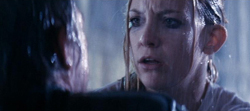 While it may appear from the bonus features menu that Universal went all out with this DVD release, the quality of the extra material doesn't even come close to matching the quantity. It's nice to have a good assortment of extras but when just about every one is vapid and hollow, it all just ends up being a whole lot of pomp and circumstance.
While it may appear from the bonus features menu that Universal went all out with this DVD release, the quality of the extra material doesn't even come close to matching the quantity. It's nice to have a good assortment of extras but when just about every one is vapid and hollow, it all just ends up being a whole lot of pomp and circumstance.
Nevertheless, the only really engaging extra feature on this disc is a mostly screen-specific audio commentary with Director Iain Softley. He starts off a bit slow, but once he gets going Softley's chat actually becomes pretty interesting. There is, of course, your requisite back patting, but most of the track is spent talking about the shoot itself. Softley provides a lot of information about the locations, the elements, and his excellent cast, but the most intriguing aspect of this track, however, is the amount of information he provides on the history of hoodoo and voodoo in the Deep South. It may not be incredibly extensive but Softley has clearly done his research, and what he does manage to tell us about hoodoo and voodoo – not to mention some historical information on slavery in the Louisiana bayous – is definitely engaging. You might not suspect it from the first few minutes of this track, but Softley's commentary easily turns out to be worth a listen. It not only provides some much-needed depth to the film, but also ends up being much more informative than I'd expected.
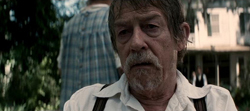 Also included on this disc are sixteen deleted scenes with optional commentary by Director Iain Softley. Although there is no individual scene selection, the scenes are broken up into separate chapters and, as a whole, run approximately 22 minutes long. Most of these excised bits are actually just extended scenes from the film, as there's nothing really groundbreaking here. There's a slight alteration to the ending in one of these scenes, which Softley was certainly right in ditching. The optional commentary is of your typical "why this scene was cut" variety, but just as in his track for the film itself, Softley comes across as intelligent and interesting.
Also included on this disc are sixteen deleted scenes with optional commentary by Director Iain Softley. Although there is no individual scene selection, the scenes are broken up into separate chapters and, as a whole, run approximately 22 minutes long. Most of these excised bits are actually just extended scenes from the film, as there's nothing really groundbreaking here. There's a slight alteration to the ending in one of these scenes, which Softley was certainly right in ditching. The optional commentary is of your typical "why this scene was cut" variety, but just as in his track for the film itself, Softley comes across as intelligent and interesting.
The remainder of supplements included on this disc are 10 short featurettes that total about 45 minutes worth of material. While you might think this is a wonderful amount of extras, what we have isn't really all that engaging. Most of it, in fact, is studio fluff.
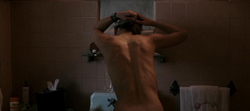 "Behind the Locked Door: Making The Skeleton Key" is your usual EPK-style "behind-the-scenes" featurette with clips from the film interspersed throughout a few short interviews with the principles and some footage from the film's set. Way too short and way too obviously studio-produced, this bonus feature did nothing for me.
"Behind the Locked Door: Making The Skeleton Key" is your usual EPK-style "behind-the-scenes" featurette with clips from the film interspersed throughout a few short interviews with the principles and some footage from the film's set. Way too short and way too obviously studio-produced, this bonus feature did nothing for me.
"Exploring Voodoo/Hoodoo" is actually one of the few featurettes worth watching. Through interviews with Voodoo Priestess Mama Lola, Voodoo Practitioner Brandi Kelley, and Voodoo Initiate Princess Wekenon we learn a little bit about the difference between hoodoo and voodoo. The women also tell us about the history of voodoo in the New Orleans area. It's just too bad this feature is so short because there's some really interesting information presented.
"Recipe & Ritual: Making the Perfect Gumbo" is a bit of a throwaway feature, but it is slightly entertaining. The title pretty much says it all as a local New Orleans musician teaches us how to prepare the "perfect gumbo." This is a featurette that maybe tries a little bit too hard, but still ends up being somewhat fun to watch.
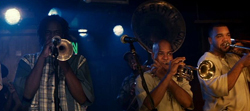 Another featurette that is, again, worth watching but one that ends up being way too short to hold any real substance is "Blues in the Bayou." Through interviews with some local musicians and some of the film's crew, this feature showcases the history of Blues and Jazz in New Orleans and the surrounding Louisiana bayous. While there is some interesting information to be gleaned from this featurette, it could be much more worthwhile if the running time weren't so short.
Another featurette that is, again, worth watching but one that ends up being way too short to hold any real substance is "Blues in the Bayou." Through interviews with some local musicians and some of the film's crew, this feature showcases the history of Blues and Jazz in New Orleans and the surrounding Louisiana bayous. While there is some interesting information to be gleaned from this featurette, it could be much more worthwhile if the running time weren't so short.
Don't bother wasting your time with the silly "Kate Hudson's Ghost Story" feature. It's not really a very interesting story at all, and really doesn't have much to do with the film. Maybe the Kate Hudson diehards can get something out of it that I couldn't.
Norman Marmillion (owner of the Laura Plantation) and Stan Waguespack (owner of the Felicity Plantation) tell us all about "Plantation Life" back in the days of slavery. While Marmillion particularly comes across as a bit condescending, he does have some really intriguing information about the brutality and hardships that many slaves faced on plantations. Again, though, this featurette doesn't get much chance to really deliver the goods with only a 3-and-a-half-minute running time.
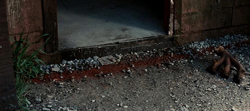 "Casting The Skeleton Key" allows Softley and the crew to talk about their excellent cast at length. The longest of the featurettes, this one provides some good information on the casting process, but mostly ends up being a lot of celebratory back patting. You hear your typical comments about how great Softley was to work with, or how talented Kate Hudson is. It all tends to sound the same after a while, and makes you wish that they'd given some of this feature's running time to the more interesting bonus material.
"Casting The Skeleton Key" allows Softley and the crew to talk about their excellent cast at length. The longest of the featurettes, this one provides some good information on the casting process, but mostly ends up being a lot of celebratory back patting. You hear your typical comments about how great Softley was to work with, or how talented Kate Hudson is. It all tends to sound the same after a while, and makes you wish that they'd given some of this feature's running time to the more interesting bonus material.
"John Hurt's Story" finds John Hurt on the set of The Skeleton Key reading a slave's first-hand account, of how he chose his name, out of a book. It's interesting to hear Hurt read through the story, but it would have been nice if Universal at least let us know the author or, at least, the title of the book.
"A House Called Felicity" is all about the house that becomes the focal point of the film. Softley and his crew tell us about working on location and creating some of the scenes in the large plantation house. We get to see some behind-the-scenes footage as well as hear from the production designer. There's not much here that we haven't already seen before in other areas of the disc.
Finally, "Gena's Love Spell" is another complete throwaway featurette that adds absolutely nothing to the value of this disc. Actress Gena Rowlands reads a "love spell" from a book and, I guess, we're supposed to try it out on our own. The only thing I did while she read the spell was wonder how Universal got her to do this horribly corny bonus feature.
Final Thoughts:
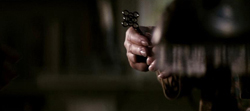 If only Director Iain Softley could have taken Peter Sarsgaard, John Hurt, and Gena Rowlands, and put them in a movie that wasn't written by Ehren Kruger, he might have a much more worthwhile film. Their work in The Skeleton Key is one of the things that keep the film from becoming a complete waste of time. I've never been much of a fan of Softley's previous film, K-PAX, and I actually think this film is a step in the right direction for the director. He captures a quality atmosphere, gets good work out of his cast, and completely follows through with his intended conclusion, so there is some good to be found within The Skeleton Key. It's just a shame that all those good aspects of the film are nearly hidden by all the bad aspects.
If only Director Iain Softley could have taken Peter Sarsgaard, John Hurt, and Gena Rowlands, and put them in a movie that wasn't written by Ehren Kruger, he might have a much more worthwhile film. Their work in The Skeleton Key is one of the things that keep the film from becoming a complete waste of time. I've never been much of a fan of Softley's previous film, K-PAX, and I actually think this film is a step in the right direction for the director. He captures a quality atmosphere, gets good work out of his cast, and completely follows through with his intended conclusion, so there is some good to be found within The Skeleton Key. It's just a shame that all those good aspects of the film are nearly hidden by all the bad aspects.
The disc itself is very much like the film in the same way. The audio and video aspects of the disc are top-notch, but the extra material doesn't quite live up to its billing. Aside from the audio commentary and one or two short featurettes, the bonus material is utterly under whelming. It's simply too much studio fluff and not enough real depth. Despite this fact, the film itself is worth checking out at least once for a few mindless thrills.
|
| Popular Reviews |
| Sponsored Links |
|
|
| Sponsored Links |
|
|
| Release List | Reviews | Shop | Newsletter | Forum | DVD Giveaways | Blu-Ray | Advertise |
|
Copyright 2024 DVDTalk.com All Rights Reserved. Legal Info, Privacy Policy, Terms of Use,
Manage Preferences,
Your Privacy Choices | |||||||









